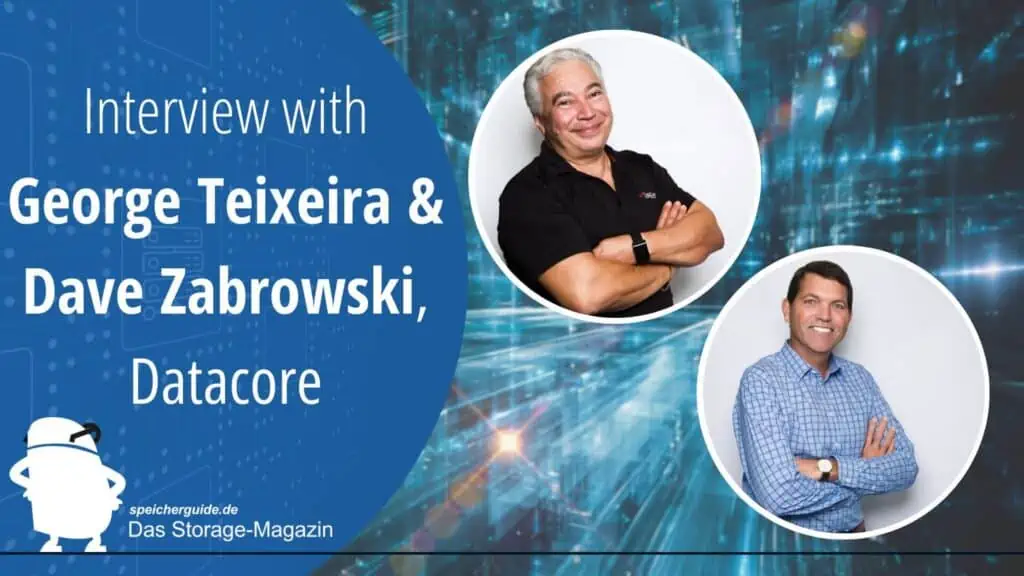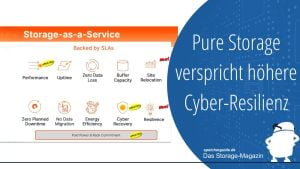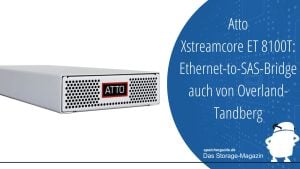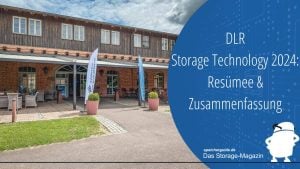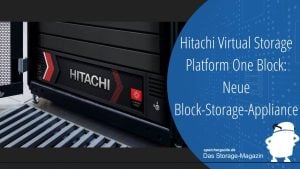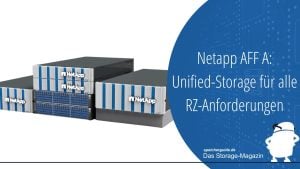In the realm of corporate perseverance, Datacore refuses to hit the brakes, and there’s a compelling reason behind it. While a cynic might adopt a provocative stance, stating, »Datacore won’t back down – but why should they when they’re already unsuccessful?« the company’s popularity speaks volumes. In an exclusive interview, we delve into the minds of company founder and former CEO, George Teixeira, and the current CEO, Dave Zabrowski, as they share their perspectives on the matter.
◼Mr. George Teixeira and Mr. Dave Zabrowski, thank you very much for your time. Mr. Teixeira, can I start with you and ask how are you enjoying your retirement? Are you bored or keeping active? I understand you are still a member of the Datacore board, is that correct?
George: Yes, I am on the Datacore board, but I am definitely not bored. I continue to help Datacore in any way I can, and I am also advising and involved with other startups that are not in the storage space. I spend a lot of time with my family and continue to do a lot of travel, attend university classes for fun, bicycling, gardening and enjoy living in South Florida in the winter and Plymouth, Massachusetts during the hot summer months. Frankly, I have a wonderful life.
◼ Datacore is a unique company. You co-founded the company in 1998 with your partner Ziya Aral (a true genius) and a group of friends, beginning in a rented garage size room in Florida. To start up the company, you needed to mortgage your houses and take no salary for the first year. What were you thinking and why were you so optimistic, that it would succeed?
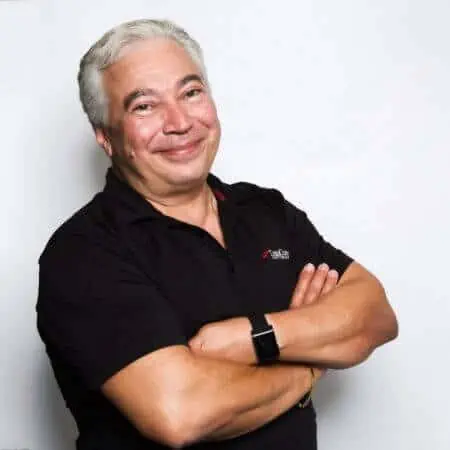
George: We knew a market shift was inevitable, the traditional way of managing storage and data had to change. We believed passionately that our software and its ability to virtualize storage so that it was no longer tied to specific proprietary hardware was the key to breaking the chains that held customer’s hostage to a relatively few storage box vendors. Storage was still in an old ‘mainframe’ mindset. Bottom-line, it was obvious that businesses could no longer afford yearly ‘rip-and-replace’ cycles, they needed a cost-effective approach utilizing readily available low-cost servers to manage their storage growth and allow them to innovate while getting the most out of existing investments. To us, the life cycle savings and return on investment alone justified our conviction that we were on the right path to success. Our first customers immediately saw the compelling value. Yes, we were early, but we never wavered in our vision that software flexibility triumphs in the end.
◼ You led the company as CEO for over 20 years, was it difficult to give away the leadership of your »baby« and life project?
George: I am very happy with how things turned out; the key was to make sure the company was in good shape going forward. I will admit, I had many concerns and was unsure what life would be like after Datacore. However, I also knew that after 20 years it was time for a change and that we needed to bring new blood and new thinking into the company. I was also pleased that I was able to overlap and work closely with Dave Zabrowski for over a year so that we ensured a smooth transition for our employees, partners, and customers. We developed a great working relationship during that time and after I continued to stay on the board and make myself available to help as needed. Dave, meanwhile, continued to invest and build on our SANsymphony success and he importantly updated our mission and expanded our footprint into containers, object storage, and edge computing through acquisitions and successful integrations of their technologies and products. The ‘baby’ is now grown and in good hands.
◼ Datacore was the »VMware« of the storage market, your team brought virtualization to storage even before Vmware existed. While Datacore has been profitable and successful, why did the breakthrough compared to Vmware’s incredible revenue growth not happen?
George: Yes, it is true that we used to make the point that »Datacore does for storage what Vmware does for servers«. It was a simple way to get across an elevator pitch of our value proposition. And as you stated, Datacore is a successful company. We continue to see double digit growth rates and have been profitable every year for well over a decade. Unlike Vmware, we chose to remain independent to control our destiny. Whereas EMC’s acquisition of Vmware back in 2003 really propelled it to over a billion in revenues by 2007, one of the fastest growth rates seen at the time. They had an exceptional run, did many smart acquisitions and became the gold standard for server virtualization.
Datacore has performed well, but our story is far from done. We have an excellent team in place, our recent acquisitions are paying off, and we have opened up many new growth opportunities to generate future breakthroughs.
◼ Datacore from the beginning was strong in Europe, especially in Germany. One of your first big customers was Lufthansa Systems. The German market was more or less driven by safety and functionality, versus risk and fancy technology. Why did a strange idea like storage virtualization based on a Windows/Intel architecture in a Unix world (during 2001), succeed especially in Germany? And not so much in the USA?
George: At that time, we got a lucky break. IBM the ‘safe’ choice in Germany was losing business to EMC and endorsed our Datacore Sansymphony solution to a number of its partners in order to compete against EMC. That initial endorsement, helped us build a partner base that introduced Datacore as a viable alternative to the big box vendors – particularly for the large mid-market German companies which were eager to pursue innovative solutions. Once these initial partners and customers saw the value, the success fed on its own.
◼ I realize that at the time, the USA, France and UK markets were driven more by Enterprise customers. Germany was more mid-sized business. What were the advantages or disadvantages of this? (I ask this because Datacore customers in Germany were and are very committed to the company, but also they tend to be kind of technical nerds, and thus proud to be innovative. I am unaware of any other company that had so many success stories/case studies during their first few years in business.)
George: The mid-size companies wanted a low-risk cost-effective solution but still wanted the high-end features and performance of the big box vendors. Our partners realized they could still sell popular brand name hardware (IBM, HP, Dell, etc.) but use Datacore software to add performance and high-end functionality. Also, these mid-size companies to a large degree were also jumping on the Windows/Intel architecture growth wave, which also was an advantage that helped us, since they could leverage their existing Microsoft/Intel trained talent to solve their storage issues. In effect they were able to satisfy their needs for a very fast and very safe (highly available) storage system in a different way and save themselves money. This led to many happy customers and partners who shared their stories and helped spread the word. We soon had hundreds and even thousands of case studies that helped fuel our growth.
◼ I am not in the position to understand how you managed to create such a positive Datacore mind-set. But somehow you/Datacore managed to do so…your thoughts?
George: I believe the case studies were a major factor, but also our team was passionate in their vision and that became infectious so that our partners and customers also embraced the vision and became loyal to the cause.
◼ Datacore has changed a lot over time (it has been over 25 years since the company was formed). Dave Zabrowski, as the Datacore CEO since 2018, you have taken a number of steps to broaden the scope of the company’s offering beyond block data storage into file, hyper-converged, containers, edge computing and especially into Object storage.
Dave, let me be a devil’s advocate, and ask why is this strategy not the same as what other established companies and Chinese/Taiwanese/USA start-ups have done? Likewise, one could say that Datacore has lost its way, am I incorrect?

Dave: Our charter in 2018 was to build the best company in the industry which meant being a leader in all important segments of storage. We did a study of where the market was going and concluded that unstructured data and container attached storage were two strategic areas that were poised to grow the most driven by AI and, at that time, the recent selection of the Kubernetes container framework by the open source community. This resulted in our acquisitions of the industry’s best object storage solution, called Swarm, and the industry’s best container storage product, called OpenEBS. We also found that, many companies using Sansymphony on their core databases and virtualized apps regularly backup and retain historical records best satisfied by large scale, durable, object storage- where our Swarm product excels. Many of those organizations are also increasingly shifting their processing from the data center to the edge, seeking compact, automated solutions, tailored for specific workflows. Combining these solutions with our award winning Sansymphony block product has propelled Datacore into a leadership position across Core, Edge and Cloud.
◼ Dave, can I ask you to expand on what you are doing with Cloud? What’s Datacore doing to satisfy those requests, especially in DACH?
Dave: In the German market especially we’ve witnessed a general unwillingness to rely on multinational hyperscalers for public Cloud services. Instead, mid-size customers place their trust in regional Cloud Service Providers (CSPs) that offer assurances over data sovereignty as well as high-speed nearby access. They feel more like a local data center than some far off nebulous cloud. In the DACH region, as well as in Southern Europe, more and more classic VARs have reinvented themselves as CSPs, powering their hosted storage infrastructure with Datacore products. This is a big growth engine for us, although subscribers may not be aware that Datacore software is handling the storage in the background.
Terra Cloud, among the largest CSPs in Germany, is one good example.
CSPs like Orbid in Belgium also offer hosted backup services combining Veeam with Datacore Swarm to deliver cost-effective, tamperproof solutions well suited for mid-size organizations.
◼ Dave, our friends who publish Storagenewsletter said recently, that there are 3 ways for Datacore to go on or exit out of the market. Being 1. acquired, 2. developing new partnerships with other vendors to expand the base or to 3. continue ‘as is’ but with limited growth success. What is your favorite path? What is the exit plan?
Dave: Actually, there are two more options. One is to go public, and the other is through further acquisitions to build a platform company. Datacore has proven it can be successful integrating complementary companies with similar cultures (e.g., Caringo Swarm, Mayadata OpenEBS) and therefore an acquisition strategy, similar to the approach companies like Kaysea (another Insight Ventures funded company) have taken can prove equally attractive.
The primary path that I favor and that we are focused on is to build what the PE investors call a platform company which is a privately held company but with an industry leading position. Beyond our robust Sansymphony business, with our recent acquisitions, we have one of the broadest product breadth in the industry and we are well underway to combing all these new assets together to target AI enabling applications in hot areas like media and entertainment, healthcare, life sciences and the edge.
◼ George, a final question, will you start a new company or join another?
George: No, I would only help as an advisor or board member. No more operational roles, after all, I love being retired!
Related Links:
- Das Interview in Deutsch: Zwei CEOs im Wortlaut: Datacore will nicht aufhören, warum auch?
- Dave Zabrowski on Linkedin
- George Teixeira on Linkedin


